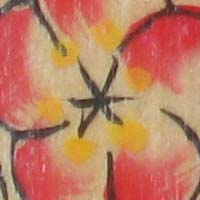Canon Digital IXUS 80 IS Review
(also known as the Canon PowerShot SD1100 IS ELPH)
Review Date: May 2nd 2008
Author: Gavin Stoker
Leave a comment about this Review
|
Image Quality
All of the sample images in this Review were captured using the 8 megapixel Superfine JPEG setting producing a file that is between 2-4Mb.
Noise
The Canon Digital IXUS 80 IS has 6 ISO settings. Noise creeps in visibly from ISO 400 upwards, readily evident without magnification in images at ISO 800, and the smoothing of detail and evident grain in shots taken at ISO 1600 means that we'd only suggest this as a very last option. Here are some 100% crops which show the noise levels for each ISO setting.
ISO 80 (100% Crop) |
ISO 100 (100% Crop) |
 |
 |
ISO 200 (100% Crop) |
ISO 400 (100% Crop) |
 |
 |
ISO 800 (100% Crop) |
ISO 1600 (100% Crop) |
 |
 |
Sharpening
Here are two 100% crops which have been Saved as Web - Quality 50 in Photoshop. The right-hand image has had some sharpening applied in Photoshop. The out-of-the camera images at the default setting are soft and benefit from some further sharpening in a program like Adobe Photoshop. Alternatively you can change the in-camera sharpening level if you don't like the default results.
Original
(100% Crop) |
Sharpened (100% Crop) |
 |
 |
 |
 |
Chromatic Aberrations
The Canon Digital IXUS 80 IS handled chromatic aberrations quite well during the review. Though there is some evidence of pixel fringing if you look hard enough, it's no more – and probably a lot less – than you'd expect from a snapshot camera pitched at the entry-level end of the market. Here are some 100% crops which show the typical chromatic aberrations that you can expect:
Chromatic
Aberrations (100% Crop) |
Chromatic
Aberrations (100% Crop) |
 |
 |
Macro
The Canon Digital IXUS 80 IS offers a Macro setting that allows you to focus on a subject that is 3cms away from the camera. The first image shows how close you can get to the subject in Macro mode (in this case a compact flash card). The second image is a 100% crop.
Macro Shot |
Macro Shot (100% Crop) |
 |
 |
Flash
The flash settings on the Canon Digital IXUS 80 IS are Auto, On, Auto Red-eye Reduction, Slow Synchro and Off. These shots of a white coloured wall were taken at a distance of 1.5m.
Flash Off - Wide Angle (38mm) |
Auto Flash - Wide Angle (38mm) |
 |
 |
Flash Off - Telephoto (114mm) |
Auto Flash - Telephoto (114mm) |
 |
 |
And here are some portrait shots. As you can see, both the Flash On and Red-Eye Reduction settings caused a small amount of red-eye.
Flash On |
Flash On (100% Crop) |
 |
 |
Flash - Red-Eye Reduction |
Flash - Red-Eye Reduction (100% Crop) |
 |
 |
Night Shot
The Canon Digital IXUS 80 IS's maximum shutter speed is 15 seconds in Long Shutter Mode, which is good news if you're interested in night photography. The shot below was taken using a shutter speed of 1 second, aperture of f/2.8 at ISO 100. I've included a 100% crop of the image to show what the quality is like.
Night Shot |
Night Shot (100% Crop) |
 |
 |
Overall Image Quality
The Canon Digital IXUS 80 IS displays a lack of corner sharpness at its wide-angle setting, and though this is largely hidden in more busy subjects, our white wall test shots show it at its most apparent. As usual with the manufacturer, colours are well saturated and vivid as a default, but not unrealistically so, and again revealing its beginner friendly nature, exposures require little if any adjustment straight out of the camera, skin tones rendered with a flatteringly healthy hue. Though there is some evidence of pixel fringing if you look hard enough, it's no more – and probably a lot less – than you'd expect from a snapshot camera pitched at the entry-level end of the market, as is the occasional loss of highlight detail. Generally though, and under ideal conditions, a high level of detail is delivered given the Canon Digital IXUS 80 IS' inauspicious nature, particularly evident in the likes of brickwork, although of course most images benefit further from the application of unsharp mask in Photoshop if you're going to be outputting prints larger than the postcard sizes offered by Canon's standalone printer range. While the above is more than satisfactory, the IXUS 80 IS' low light performance is unfortunately nothing to write home about. Noise creeps in visibly from ISO 400 upwards, readily evident without magnification in images at ISO 800, and the smoothing of detail and evident grain in shots taken at ISO 1600 means that we'd only suggest this as a very last option. True image stabilisation in optical form is a nice solution to have, but as with other cameras of this ilk, it's far from infallible.
|
![]() PhotographyBLOG
is a member of the DIWA
organisation. Our test results for the Canon Digital IXUS 80 IS have been submitted to DIWA
for comparison with test results for different samples of
the same camera model supplied by other DIWA
member sites.
PhotographyBLOG
is a member of the DIWA
organisation. Our test results for the Canon Digital IXUS 80 IS have been submitted to DIWA
for comparison with test results for different samples of
the same camera model supplied by other DIWA
member sites.
